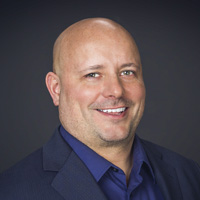Nearing Retirement? Ditch ‘Hidden’ 401(k) Fees
Your 401(k) may be costing you more than you realized. An in-service direct transfer to an IRA could be a game changer – if you qualify.


If you’re closing in on retirement — maybe five to 10 years away – you’re probably paying more attention than ever to your 401(k) balance and returns.
But when was the last time you took a hard look at how much you’re paying in “hidden” 401(k) plan fees?
Although the Department of Labor says plan sponsors must provide a breakdown of account charges at least once a year with a participant-fee-disclosure notice, many people never read theirs — or even the portion of their quarterly statements that contains information about expenses.
From just $107.88 $24.99 for Kiplinger Personal Finance
Become a smarter, better informed investor. Subscribe from just $107.88 $24.99, plus get up to 4 Special Issues

Sign up for Kiplinger’s Free Newsletters
Profit and prosper with the best of expert advice on investing, taxes, retirement, personal finance and more - straight to your e-mail.
Profit and prosper with the best of expert advice - straight to your e-mail.
That’s a mistake.
The goal of a 401(k), after all, is to save as much as possible for retirement. And that’s harder to do if, over time, high hidden plan fees keep nibbling away at that money, reducing the growth in your account.
How Much Can 401(k) Fees Cost You?
Even in the short term, from one year to the next, hidden fees can do some damage — especially if you manage to stash away a significant amount in a 401(k) or similar employer plan.
That doesn’t mean that you shouldn’t take advantage of the convenience of saving in an employer-sponsored plan or the opportunity to get matching contributions.
But if you’ve got $1 million in your 401(k), and your plan charges 1% of your account balance to cover its hidden fees each year (a typical amount), that’s $10,000 coming out of your 401(k) balance every year.
That’s not a nibble. It’s a bite. And some investors pay 1.5% or even 2% in hidden plan fees on 401(k) plan assets every year.
Could an In-Service Direct Transfer Help You?
Though you may be thinking of your account fees (if you were aware of them at all) as “the cost of doing business,” that’s not necessarily true. Even if you’ve been saving in the same plan for decades and have a healthy nest egg sitting in your 401(k), you may be able to cut your hidden plan fees.
In fact, if you’re 59½ or older, you likely have a strategy available to you that your younger co-workers don’t. It’s called an in-service 401(k) direct transfer, and it could make a lot of sense for you.
What’s an in-service direct transfer?
You’ve likely had friends who have transferred funds from a 401(k) to a traditional or Roth IRA when they left one or more jobs through the years. Or maybe you’ve done it yourself. Well, an in-service direct transfer works much the same way. If you’re 59½ or older, and your employer’s plan allows it, which most do, you can move your balance directly from your 401(k) to an IRA and enjoy several potential benefits, including:
- More control. With an IRA, you may have greater fee transparency. You’ll have to do your homework to be sure your new account is less expensive than your employer’s, but doing a direct transfer into an IRA could save you in hidden 401(k) plan administrative fees, mutual fund expense ratios and other hidden costs that can reduce your returns.
- More investment choices. IRAs generally can offer a wider range of options than 401(k) plans, which can be limited. So not only will you have a potentially better opportunity to comparison-shop for investments with lower costs, you may also be able to add more diversity to your portfolio as you move toward retirement. An IRA can put you in a position to invest in stocks, bonds, exchange-traded funds, real estate investment trusts, precious metals and more.
- It may make it easier to do a Roth conversion. Many 401(k) plans don’t have a Roth option, and many that do don’t have a Roth conversion option. But if you perform an in-service direct transfer to an IRA, you can perform Roth conversions if and when you choose.
- You can still contribute new money to your 401(k). If your employer offers a matching contribution, you can continue contributing to your 401(k) to get that money. Your account will remain open, so you can keep the convenience and benefits of your workplace retirement plan, but you’ve removed the effect of paying hidden 401(k) plan fees on your entire balance.
Get Some Answers Before You Act
Because different employer-sponsored plans have different rules, you should ask your plan administrator about eligibility and other requirements before you move forward with this strategy.
It’s also a good idea to discuss your concerns about account fees — and the strategies available to help reduce them — with an independent financial adviser.
Every financial decision comes with pros and cons, so you’ll want to thoroughly talk this one through. An adviser who has a legal obligation to look out for your best interests and can help you maximize your retirement plan savings … even if your retirement is just a few years away.
Kim Franke-Folstad contributed to this article.
Scott Tucker Solutions, Inc is an independent financial services firm that utilizes a variety of investment and insurance products. Investment advisory services offered only by duly registered individuals through AE Wealth Management, LLC (AEWM). AEWM and Scott Tucker Solutions, Inc. are not affiliated companies. 1122250 – 11/21
Neither the firm nor its agents or representatives may give tax or legal advice. Individuals should consult with a qualified professional for guidance before making any purchasing decisions. Our firm is not affiliated with or endorsed by the U.S. Government or any governmental agency.
Appearances on Kiplinger.com were obtained through a paid PR program. The columnist received assistance from a public relations firm in preparing this piece for submission to Kiplinger.com. Kiplinger was not compensated in any way.
Profit and prosper with the best of Kiplinger's advice on investing, taxes, retirement, personal finance and much more. Delivered daily. Enter your email in the box and click Sign Me Up.

Scott Tucker is president and founder of Scott Tucker Solutions, Inc. He has been helping Chicago-area families with their finances since 2010. A U.S. Navy veteran, Scott served five years on active duty as a cryptologist and was selected for duty at the White House based on his service record. He holds life, health, property and casualty insurance licenses in Illinois, has passed the Series 65 securities exam in 2015 and is an Investment Adviser Representative.
-
 Gold and Silver Shine as Stocks Chop: Stock Market Today
Gold and Silver Shine as Stocks Chop: Stock Market TodayStocks struggled in Friday's low-volume session, but the losses weren't enough to put the Santa Claus Rally at risk.
-
 Don't Wait Until January: Your Year-End Health Checklist to Kickstart 2026
Don't Wait Until January: Your Year-End Health Checklist to Kickstart 2026Skip the fleeting resolutions and start the new year with a proactive plan to optimize your longevity, cognitive health, and social vitality.
-
 Premium Rewards Cards: More Perks, Higher Fees
Premium Rewards Cards: More Perks, Higher FeesSome issuers are hiking the annual fee on their flagship luxury credit cards by hundreds of dollars. Are they still worth using?
-
 How to Master the Retirement Income Trinity: Cash Flow, Longevity Risk and Tax Efficiency
How to Master the Retirement Income Trinity: Cash Flow, Longevity Risk and Tax EfficiencyRetirement income planning is essential for your peace of mind — it can help you maintain your lifestyle and ease your worries that you'll run out of money.
-
 I'm an Insurance Expert: Sure, There's Always Tomorrow to Report Your Claim, But Procrastination Could Cost You
I'm an Insurance Expert: Sure, There's Always Tomorrow to Report Your Claim, But Procrastination Could Cost YouThe longer you wait to file an insurance claim, the bigger the problem could get — and the more leverage you're giving your insurer to deny it.
-
 Could a Cash Balance Plan Be Your Key to a Wealthy Retirement?
Could a Cash Balance Plan Be Your Key to a Wealthy Retirement?Cash balance plans have plenty of benefits for small-business owners. For starters, they can supercharge retirement savings and slash taxes. Should you opt in?
-
 7 Retirement Planning Trends in 2025: What They Mean for Your Wealth in 2026
7 Retirement Planning Trends in 2025: What They Mean for Your Wealth in 2026From government shutdowns to market swings, the past 12 months have been nothing if not eventful. The key trends can help you improve your own financial plan.
-
 What Defines Wealth: Soul or Silver? Good King Wenceslas' Enduring Legacy in the Snow
What Defines Wealth: Soul or Silver? Good King Wenceslas' Enduring Legacy in the SnowThe tale of Good King Wenceslas shows that true wealth is built through generosity, relationships and the courage to act kindly no matter what.
-
 An Investing Pro's 5 Moves to Help Ensure 2025's Banner Year in the Markets Continues to Work Hard for You in 2026
An Investing Pro's 5 Moves to Help Ensure 2025's Banner Year in the Markets Continues to Work Hard for You in 2026After a strong 2025 in the stock market, be strategic by rebalancing, re-investing with a clear purpose and keeping a disciplined focus on your long-term goals.
-
 Introducing Your CD's Edgier Cousin: The Market-Linked CD
Introducing Your CD's Edgier Cousin: The Market-Linked CDTraditional CDs are a safe option for savers, but they don't always beat inflation. Should you try their counterparts, market-linked CDs, for better returns?
-
 How to Protect Yourself and Others From a Troubled Adult Child: A Lesson from Real Life
How to Protect Yourself and Others From a Troubled Adult Child: A Lesson from Real LifeThis case of a violent adult son whose parents are in denial is an example of the extreme risks some parents face if they neglect essential safety precautions.